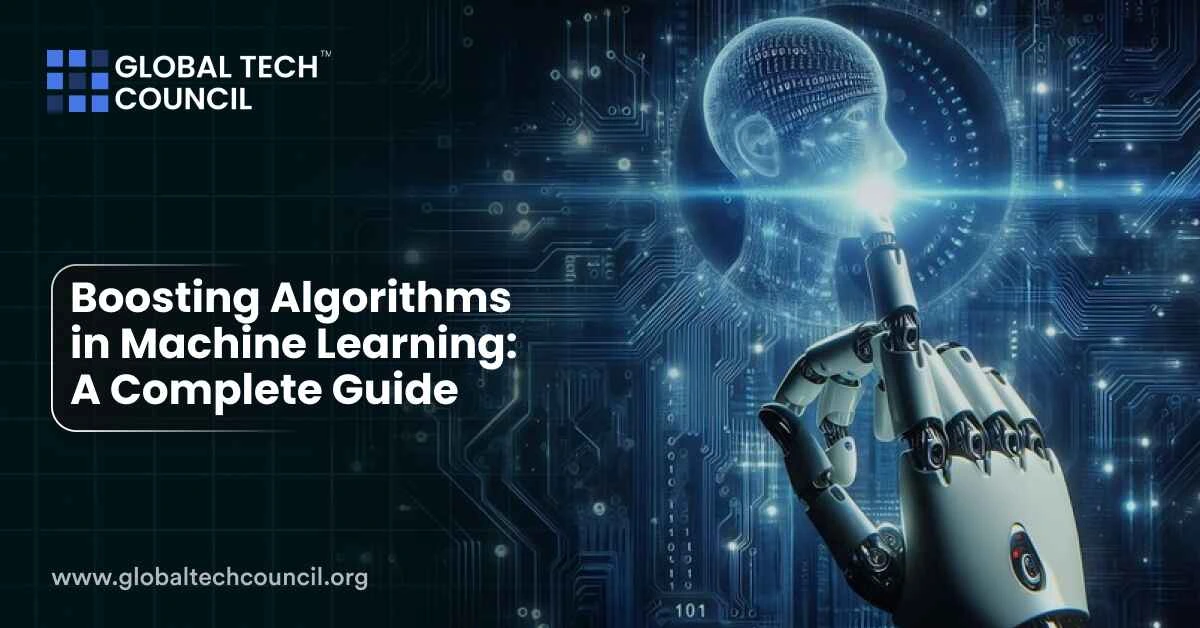
A lot of analysts misunderstand the word boosting used in data science. Let us see an interesting explanation of the term. Boosting gives power to machine learning models to improve their predictive accuracy. They are one of the most extensively used algorithms in data science competitions. To acquire in-depth knowledge of Artificial Intelligence and Machine Learning, you can enroll in an AI certification course or machine learning training.
Learning Of Blog
- What is Boosting?
- Boosting Algorithms
- How do Boosting Algorithms Work?
- Endnote
In this post, we will see how a booster algorithm works effortlessly.
What is Boosting?
In machine learning, boosting is a group of meta-algorithms designed primarily to minimize bias and also variance in supervised learning and a family of machine learning algorithms that transform weak learners into strong ones.
The term boosting mentions a family of algorithms that convert weak learners to strong learners. Let’s understand this definition in more detail by solving the problem of spam email identification:
How would you classify your email as spam or not? Like everybody else, our initial approach would be to identify spam and not spam emails using the following criteria. If it is:
- An email which only has one image file (promotional image), it’s a spam file.
- An email with just a link(s), it’s a spam link
- An email body consists of a sentence like “You won prize money of 500,000$,” it’s a spam email.
- An email from our official “[email protected]” domain is not spam.
- An email from a known source is not spam.
Above, we have defined multiple rules to classify an email as spam or not spam. But do you think these rules are strong enough to organize emails individually successfully? No, no.
These rules individually are not powerful enough to classify emails as spam or not spam. These rules are put as weak learners. To overcome this, we use methods like average/weighted average, considering prediction has a higher vote. Like, we defined five weak learners above. Out of these five, three are voted spam, and the other two are voted not spam. In such a case, by default, we’re going to consider email as spam because we have a higher vote for spam.
Boosting Algorithms
While boosting is not algorithmically constrained, the majority of boosting algorithms consist of iteratively learning weak classifiers concerning distribution and adding them to the final robust classifier. When combined, they are weighted in a way that is related to the accuracy of the weak learners. When a weak learner is added, the data weights are readjusted, known as re-weighting. Misclassified input data gain higher weight, and examples that are correctly classified, lose weight. Thus, upcoming weak learners focus more on examples that have been misclassified by previous weak learners. There are a lot of boosting algorithms. The original ones, suggested by Robert Schapire (a recursive majority-gate formulation) and Yoav Freund (a majority-boost), were not efficient and could not take complete advantage of the weak learners. Schapire and Freund then founded AdaBoost, an adaptive booster algorithm that won the prestigious Gödel Prize. Only algorithms that are proven to boost algorithms in the probably approximately correct learning formulation can be called boosting algorithms.
Other algorithms that are similar in spirit to boosting algorithms are sometimes referred to as leverage algorithms, although they are also sometimes incorrectly referred to as boosting algorithms. The key difference between many boosting algorithms is their method of weighting data points and hypotheses. AdaBoost is very popular and historically the most significant, as it was the first algorithm that could be adapted by the weak learners. It is also the basis for an introductory analysis of boosting in university machine learning courses. There are also more recent algorithms such as MadaBoost, LPBoost, TotalBoost, BrownBoost, xgboost, LogitBoost, etc. Many boosting algorithms fit into the AnyBoost framework, which shows that boosting performs a gradient descent into a function space using a convex cost function.
How do Boosting Algorithms Work?
Now we know that boosting combines a weak learner with a basic learner to form a strong rule. The immediate question that should pop in your mind is, How to improve the recognition of weak learners?
To find a weak learner, we use simple learning (ML) algorithms with a different distribution. Each time a basic learning algorithm is applied, it generates a new weak prediction rule. It’s an iterative process. After a lot of iterations, the boosting algorithm combines these weak rules into a single strong prediction rule. Here’s another question that might haunt you. How do we choose different distributions for each round?
Here are the following steps to choose the correct distribution:
- The primary learner takes all the distributions and assigns equal weight or attention to each observation.
- If there is a prediction error induced by the first simple learning algorithm, we must pay more attention to observations that have a prediction error. Then we apply the next simple learning algorithm.
- Iterate step 2 until the limit of the basic learning algorithm is reached, or higher accuracy is achieved.
Finally, it combines the outputs of the weak learner and produces a strong learner, ultimately increasing the model’s predictive capacity. Boosting pays more attention to cases that are misclassified or have higher errors due to previous weak rules.
Endnote
In this post, we looked at boosting, one of the ensemble modeling approaches used to improve predictive efficiency. Boosting algorithms represent a different machine learning perspective: turning a weak model into a stronger one to correct its weaknesses. Now that you understand how boosting works, it’s time to try it in real projects and find yourself the best certification for machine learning and become a machine learning expert in no time!